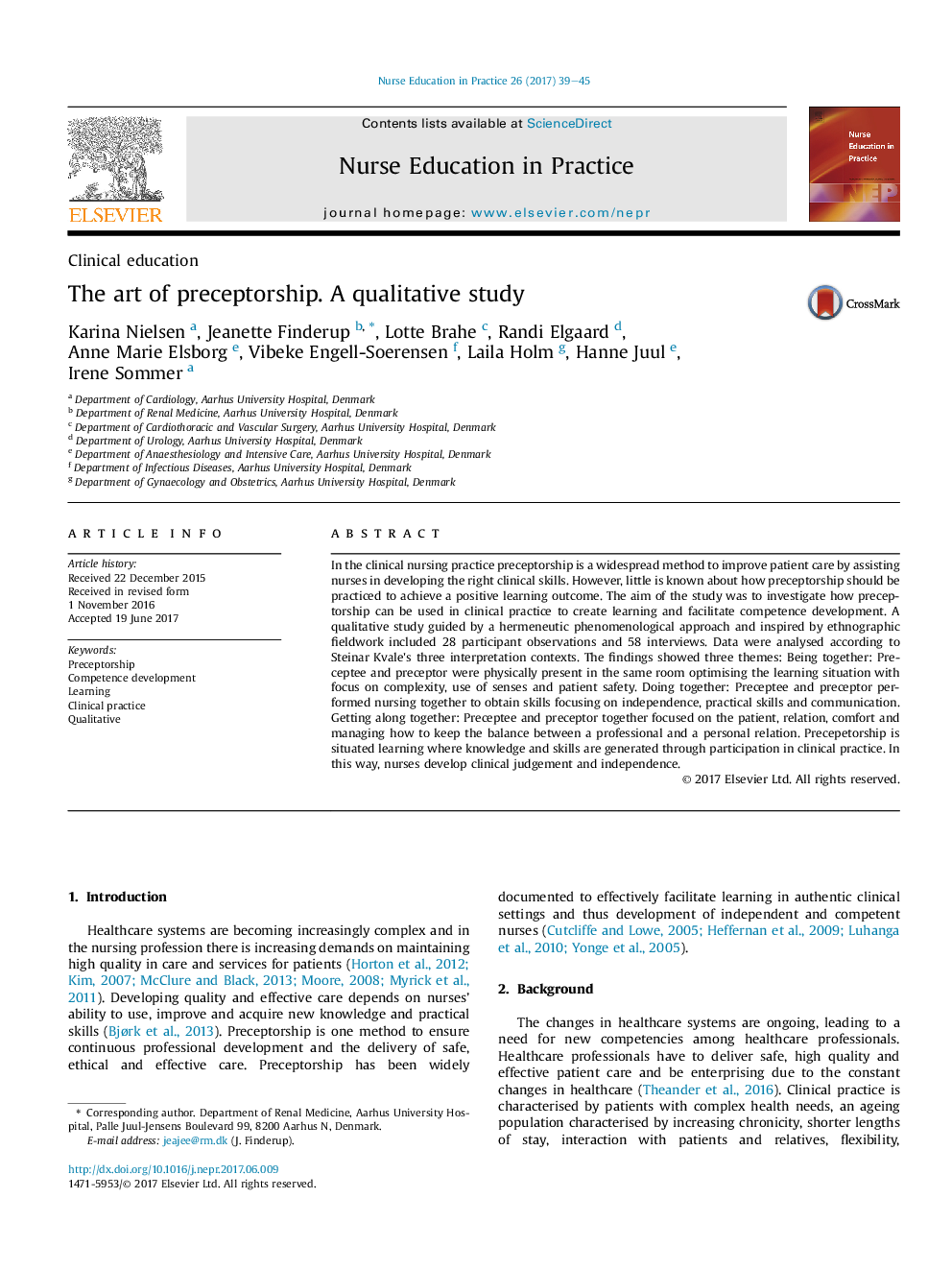| Article ID | Journal | Published Year | Pages | File Type |
|---|---|---|---|---|
| 4940433 | Nurse Education in Practice | 2017 | 7 Pages |
Abstract
In the clinical nursing practice preceptorship is a widespread method to improve patient care by assisting nurses in developing the right clinical skills. However, little is known about how preceptorship should be practiced to achieve a positive learning outcome. The aim of the study was to investigate how preceptorship can be used in clinical practice to create learning and facilitate competence development. A qualitative study guided by a hermeneutic phenomenological approach and inspired by ethnographic fieldwork included 28 participant observations and 58 interviews. Data were analysed according to Steinar Kvale's three interpretation contexts. The findings showed three themes: Being together: Preceptee and preceptor were physically present in the same room optimising the learning situation with focus on complexity, use of senses and patient safety. Doing together: Preceptee and preceptor performed nursing together to obtain skills focusing on independence, practical skills and communication. Getting along together: Preceptee and preceptor together focused on the patient, relation, comfort and managing how to keep the balance between a professional and a personal relation. Precepetorship is situated learning where knowledge and skills are generated through participation in clinical practice. In this way, nurses develop clinical judgement and independence.
Related Topics
Health Sciences
Nursing and Health Professions
Nursing
Authors
Karina Nielsen, Jeanette Finderup, Lotte Brahe, Randi Elgaard, Anne Marie Elsborg, Vibeke Engell-Soerensen, Laila Holm, Hanne Juul, Irene Sommer,
